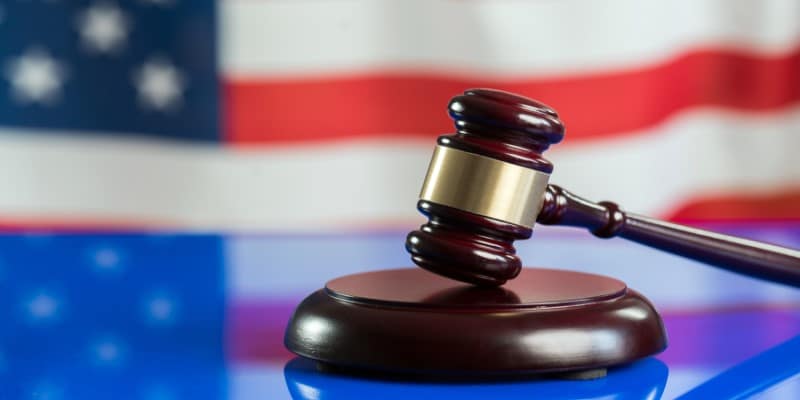
A second lawsuit against the proposed $100k fee for new H-1B visa applications has been filed by the U.S. Chamber of Commerce.
The suit opposes the Presidential Proclamation that restricts entry and imposes a hefty fee of $100,000 on certain H-1B petitions. This claim follows another lawsuit filed in early October by a coalition of labor unions, healthcare providers, educational institutions, and religious organizations against the new charge.
The US Supreme Court also upheld a ruling this week affirming the H-1B program’s legality.
It decided not to review a challenge to a federal rule that allows some H-4 visa holders—spouses of H-1B workers—to work in the U.S., marking a significant development in the H-1B program under the second Trump Administration. This decision is vital as it provides economic and family stability for thousands of immigrant households and supports employers who rely on skilled workers.
These developments stem from concerns about the abuse of the visa program by U.S. employers, domestic job displacement, the need for skilled labor in technology and specialized fields, and a desire to enhance national security measures. Additionally, there is an ongoing debate regarding wage disparities and the allocation process of the H-1B program.
What is the H-1B visa?
The H-1B program is a non-immigrant visa that allows foreign skilled workers to temporarily reside in the U.S. It was designed to fill gaps in specialized employment.
The program has an annual cap of approximately 85,000 new visas, but demand far exceeds supply, resulting in a lottery selection process. In fiscal year 2025–26, over 358,000 registrations were submitted, with more than 120,000 petitions being finally selected to move forward. Major companies, such as Amazon, Tata, and Microsoft, have led the applications.
This visa program is a primary source of EB-5 applications for H-1B visa holders who seek to remain in the U.S. after their contract with their employer expires.
What is the H-1B bill, and how could it reshape this employment program?
U.S. Senators Dick Durbin and Chuck Grassley have also reintroduced a bill that aims to address fraud and abuse within the immigration system concerning the H-1B and L-1 visas. It seeks to protect American workers and enhance transparency in foreign worker recruitment.
The proposal aims to prevent the alleged misuse of these visa programs, which can lead to the displacement of U.S. workers in favor of cheaper foreign labor. Provisions in the bill include new wage and recruitment requirements, mandatory job postings for H-1B positions, increased penalties for wage violations, and reforms that prioritize highly educated workers in STEM fields.
Durbin and Grassley first introduced the bill in 2007 in response to concerns about large corporations laying off American workers while hiring foreign employees for H-1B visas.
Jihan Merlin from Alma Law explains that the bill reflects a long-standing effort to tighten these visa programs with higher wage floors, stricter eligibility rules, and expanded enforcement.
“If enacted, it would dramatically raise compliance costs and restrict common business models like third-party placement. Even if the bill doesn’t advance in full, its provisions may influence regulatory action and employer behavior in the near term,” Merlin says.
The $100,000 fee and its importance to U.S. labor
The proclamation of a new $100,000 fee for U.S. employers sponsoring H-1B visas took effect on Sept. 21 for prospective petitions filed after that date.
The Trump administration argues that this fee is necessary to curb employer abuse of the program while still allowing skilled workers to be hired. Concerns cited include wage suppression, an increase in foreign labor, job losses for U.S. workers, and national security threats.
However, a coalition of employers and organizations that rely on H-1B visa talent filed the first lawsuit against it on Oct. 3. They argue that this sudden financial burden disrupts stability for both employers and foreign workers, with significant implications for healthcare, education, and the economy. This group includes labor unions, healthcare providers, educational institutions, and religious organizations that depend on skilled professionals brought to the U.S. through the H-1B program to fill essential roles.
Why is the U.S. government trying to change the H-1B lottery?
The U.S. Department of Homeland Security (DHS) is proposing a change to the H-1B visa lottery selection system. The new system would prioritize candidates based on their wage levels and talent, rather than the current random lottery.
If this proposal is enacted as it is, it could impact new applicants, including international students studying in the U.S. who seek employment through this visa to remain in the country. The draft was entered into the Federal Register for public comment on Sept. 24, allowing 30 days for public feedback.
DISCLAIMER: The views expressed in this article are solely the views of the author and do not necessarily represent the views of the publisher, its employees. or its affiliates. The information found on this website is intended to be general information; it is not legal or financial advice. Specific legal or financial advice can only be given by a licensed professional with full knowledge of all the facts and circumstances of your particular situation. You should seek consultation with legal, immigration, and financial experts prior to participating in the EB-5 program Posting a question on this website does not create an attorney-client relationship. All questions you post will be available to the public; do not include confidential information in your question.








